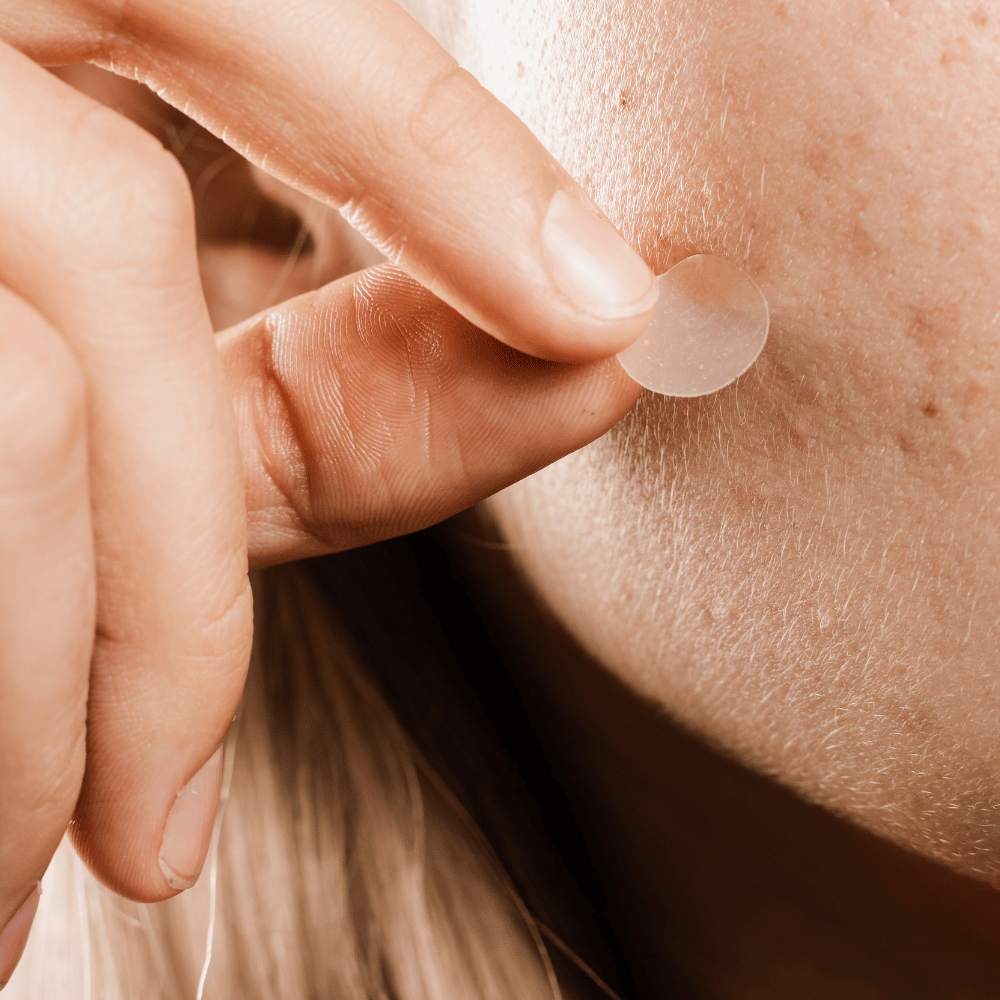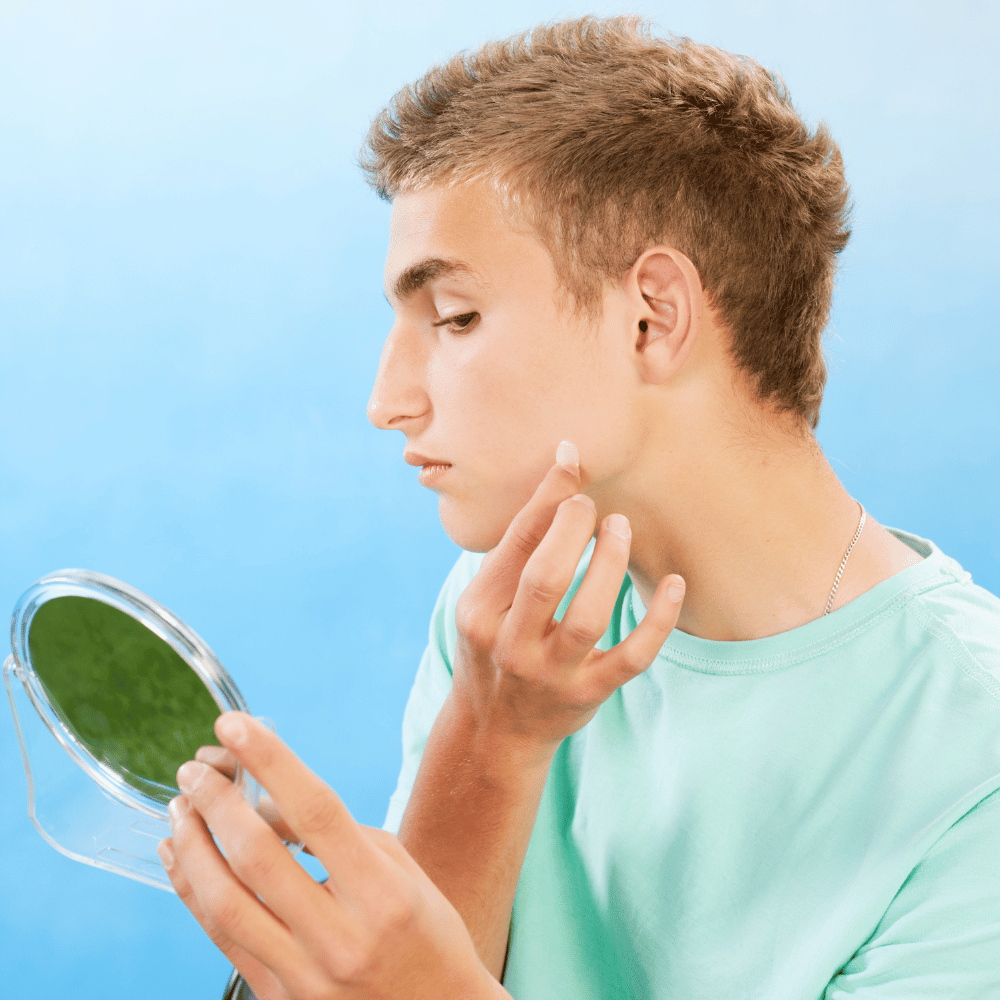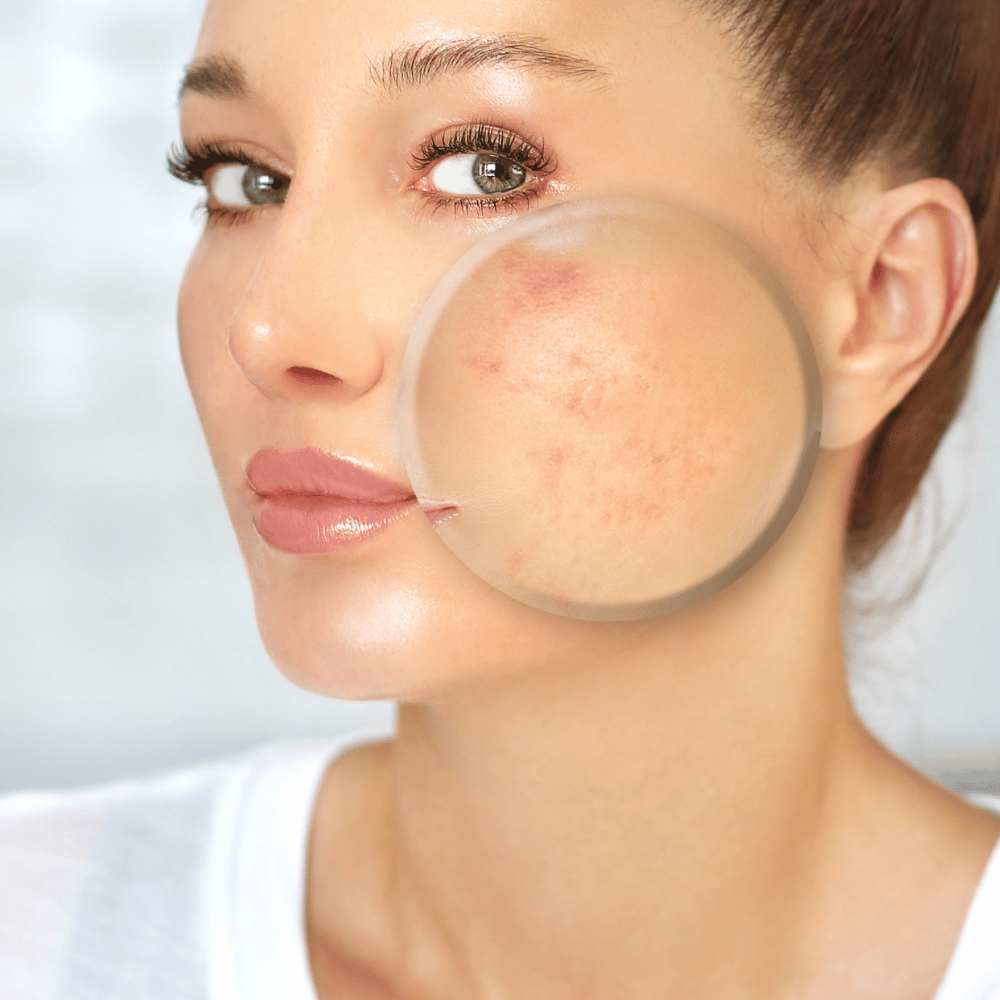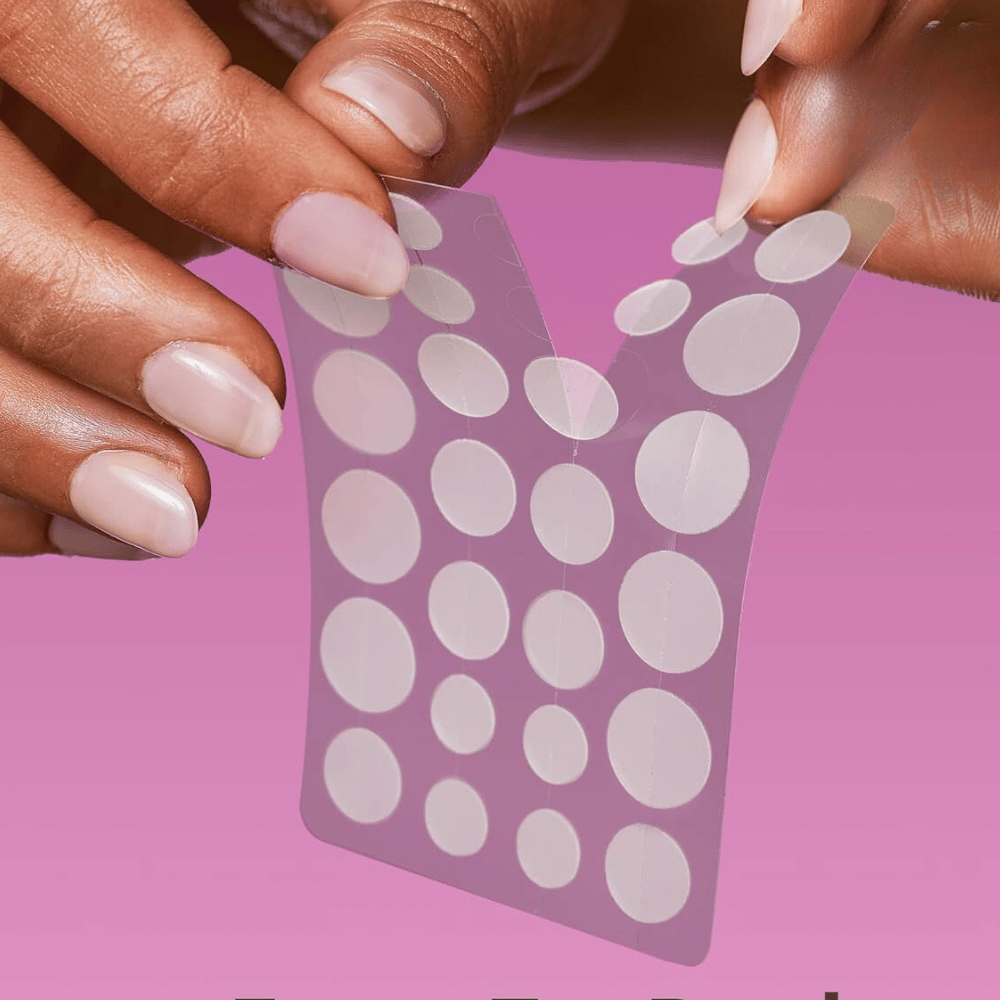Key Takeaways:
- Discover the most effective pimple patches for various types of acne.
- Learn how active ingredients like hydrocolloid, salicylic acid, and tea tree oil target acne.
- Understand how to apply pimple patches for maximum benefit properly.
Acne is a common skin concern that affects millions of people worldwide. Whether it's hormonal acne, cystic acne, or the occasional breakout, finding the right treatment can be a challenge.
Pimple patches have emerged as a popular solution, but with so many options on the market, it's essential to know which pimple patch works the best for your skin type and acne concerns.

Understanding Pimple Patches
Pimple patches, also known as acne stickers or acne healing dots, are small, adhesive hydrocolloid dressings designed to treat pimples. They create a moist environment that promotes wound healing and protects sensitive skin in the area from bacteria and further irritation.
The Science Behind Hydrocolloid Patches
Hydrocolloid patches are traditionally used for wound healing. They work by absorbing excess fluid, such as pus and oil, which helps to flatten and heal pimples more quickly. For those with oily skin, hydrocolloid patches can be particularly beneficial as they manage excess oil without drying out the skin.
Salicylic Acid and Tea Tree Oil Patches
Some pimple patches are infused with acne-fighting ingredients like salicylic acid and tea tree oil. Salicylic acid is a beta hydroxy acid that exfoliates dead skin cells and unclogs pores, while tea tree oil has natural antibacterial properties that can soothe skin and reduce inflammation.
Hydrocolloid and Salicylic Acid: A Powerful Duo
Combining hydrocolloid and salicylic acid in a pimple patch can provide a two-pronged approach to treating acne. The hydrocolloid material absorbs impurities, while salicylic acid works to exfoliate and clear clogged pores.
Pimple Patches for Cystic Acne
Cystic acne is a more severe form of acne characterized by deep, inflamed breakouts. Pimple patches containing active ingredients like benzoyl peroxide or tea tree extract can penetrate the skin to treat these deep pimples effectively.

Pimple Patches for Hormonal Acne
Hormonal acne often requires a targeted approach. Pimple patches with active ingredients, like hyaluronic acid and aloe vera leaf extract can help to hydrate and calm the skin while addressing acne blemishes.
Pimple Patches for Sensitive Skin
Those with sensitive skin types should look for pimple patches free from harsh chemicals. Medical-grade hydrocolloids and gentle ingredients like aloe vera can provide effective treatment without irritation.
Pimple Patches for Darker Skin Tones
It's crucial to choose pimple patches that won't exacerbate post-acne marks or dark spots. Patches with ingredients like niacinamide can help to minimize redness and even out skin tone.
How to Apply Pimple Patches
Proper application is key to ensuring pimple patches work effectively. Clean skin is essential before applying a patch to an acne pimple master allows the adhesive to stick properly and the active ingredients to work on the pimple.
When to Apply Pimple Patches
Most pimple patches are designed to be used overnight, providing a long period for the patch to absorb impurities and deliver active ingredients. However, some are thin and virtually invisible, making them suitable for daytime use.
The Role of Pimple Patches in Acne Treatment
While pimple patches are an excellent spot treatment, they should be part of a broader acne treatment regimen that includes a consistent skincare routine with acne-fighting ingredients.

The Best Pimple Patches on the Market
Let's dive into some of the most popular pimple patches and how they stand out in treating acne.
The COSRX Acne Pimple Master Patch is a cult favorite. These hydrocolloid blemish patches are known for their ability to quickly flatten pimples by absorbing pus and oil.
Hero Cosmetics Mighty Patch is renowned for its medical-grade hydrocolloid, which effectively draws out impurities from dry skin and speeds up the acne healing process.
Peace Out Acne Dots combines hydrocolloid technology with active ingredients like salicylic acid to exfoliate dead skin cells and treat pimples.
The ZitSticka Killa Kit includes microdart technology to deliver acne-fighting ingredients like hyaluronic acid and salicylic acid tea tree deep into the skin.
Starface Hydro-Stars are not only effective with their hydrocolloid formulation but also add a fun twist with their star-shaped design, making acne treatment a little less daunting.
Peach Slices Acne Spot Dots are gentle yet effective, with a blend of salicylic acid, tea tree oil, and calamine to soothe skin and reduce the appearance of blemishes.
Acne Fighting Ingredients in Pimple Patches
When it comes to battling blemishes, the ingredients in pimple patches are the front-line warriors. Many patches boast a cocktail of acne-fighting ingredients designed to tackle the pesky problem head-on.
For instance, medical-grade hydrocolloid is often used to absorb pus and reduce inflammation, creating an environment where acne struggles to thrive. This ingredient, alongside others like salicylic acid, can make a significant difference for those with acne-prone skin, providing a targeted treatment that works while you go about your day.
Moreover, some pimple patches are infused with additional skin-soothing agents such as tea tree oil or benzoyl peroxide, which are known for their antibacterial properties. These ingredients help in not only treating the existing blemish but also in preventing future breakouts.
It's important to note that while these patches are a convenient spot treatment, they should be part of a comprehensive skincare routine recommended by a board-certified dermatologist, especially for those with persistent acne issues.
Pimple Patches Pull: The Extraction Process Explained
Have you ever wondered how pimple patches work their magic? It's all about the 'pull'! These tiny but mighty warriors use a gentle extraction method to help clear out the gunk from your pores.
When you place a hydrocolloid acne patch on a blemish, it absorbs the excess fluid and pus, effectively pulling it away from the skin. This not only helps reduce inflammation but also speeds up the healing process. The satisfaction of seeing the patch turn opaque is a clear sign that it's doing its job!
But it's not just about the visible results. The pulling action of pimple patches also minimizes the risk of scarring. By drawing out impurities without squeezing or picking, they maintain the integrity of the skin's surface.
This is particularly beneficial for acne-prone skin due to post-acne marks, as it prevents the dark spots that can linger long after the pimple has healed. So next time you're faced with an unwelcome zit, remember that a pimple patch can pull your troubles away, quite literally!

Post Acne Marks: How Pimple Patches Can Help
Post-acne marks can be a frustrating reminder of past breakouts, but pimple patches are here to offer a solution. These small, discrete patches not only treat active acne but also play a role in reducing the appearance of post-acne marks.
By providing a protective barrier, they prevent hyperpigmentation caused by external factors like UV exposure and environmental pollutants. This is especially important during the day when your skin is most vulnerable to these elements.
Moreover, some acne patches are infused with ingredients like niacinamide and vitamin C, which are known for their brightening properties. These ingredients work in tandem with the patch's primary function to not only flatten the pimple but also to fade any residual marks.
Consistent use of these acne patches alone, as part of a comprehensive skincare routine, can lead to clearer, more even-toned skin over time. So, if you're looking to say goodbye to both pimples and the marks they leave behind, incorporating a targeted acne patch into your regimen might just be the key.

The Versatility of Pimple Patch Sizes
Not all pimples are created equal, and thankfully, neither are pimple patches. The size pimple patches come in varies, catering to different types of breakouts, from the tiny, barely-there bumps to the more prominent, angry ones.
Starface Hydro Stars, for example, are not only adorable but also come in a size that covers enough surface area to ensure the entire blemish is treated. This versatility is crucial because it allows users to customize their treatment based on the severity and size of their acne.
For those with dry skin, a larger hydrocolloid patch can also protect the area from further irritation caused by dryness or environmental factors. It's like a mini shield for your pimple, keeping it safe from the outside world while it heals.
On the flip side, smaller patches can be a discreet way to treat acne during the day. Whether you're dealing with a single spot or a cluster of troublemakers, there's a patch size to cover your needs, ensuring that acne patches work effectively for a variety of situations.
Pimple Patch Effectiveness for Different Acne Types
It's important to match the type of pimple patch to the specific acne concern. For example, hydrocolloid patches are best for whiteheads, while patches with salicylic acid are more suited for blackheads and inflamed breakouts.
Pimple Patch Limitations
While pimple patches can be incredibly effective, they are not a cure-all. They work best on acne dots and surface-level blemishes and may not be as effective for more severe acne like nodules or cysts.
Incorporating Pimple Patches into Your Skincare Routine
To maximize the benefits of pimple patches, they should be incorporated into a skincare routine that addresses the root causes of acne, such as excess oil production and clogged pores.
Preventing Acne Scarring with Pimple Patches
Pimple patches can help to prevent acne scarring by protecting the pimple from external factors like picking and bacteria, which can lead to further inflammation and scarring.
The Future of Pimple Patches
Innovations in skincare continue to improve the effectiveness of pimple patches. Future patches may include even more advanced ingredients and technologies to treat pimples more effectively.
Pimple Patch Myths Debunked
There are many misconceptions about pimple patches, such as their ability to work on all types of acne or that they can replace a skincare routine. It's essential to understand their proper use and limitations.
Choosing the Right Pimple Patch for You
Selecting the best pimple patch involves considering your skin type, the kind of acne you're experiencing, and the ingredients that work best for your skin concerns.
Pimple Patch Case Studies
Real-life examples of how pimple patches have helped individuals treat their acne can provide insight into their effectiveness and how to use them in your skincare routine.

SwagScale Summary
Pimple patches offer a convenient and effective way to treat acne, especially when chosen and used correctly. Whether you're dealing with oily skin, dry or sensitive skin, or inflammatory breakouts, there's a pimple patch out there that can help.
Remember to look for key ingredients like hydrocolloid, salicylic acid, and tea tree oil, and consider the size of the best pimple patches for discreet daytime wear or overnight treatment. With the right pimple patch, you can accelerate the acne-healing process, minimize redness, and even prevent post-acne marks.
Your Pimple Patch Guru,
Kim
FAQ Section
Can pimple patches work on cystic acne?
Pimple patches can provide relief for cystic acne by protecting the area and reducing inflammation. However, due to the depth of cystic acne, patches with active ingredients that penetrate deeper, like benzoyl peroxide or tea tree extract, may be more effective.
How long should I leave a pimple patch on?
Pimple patches are typically designed to be worn for several hours or overnight. It's best to follow the instructions on the packaging, but generally, a patch should be left on until it turns opaque, indicating that it has absorbed impurities.
Are pimple patches suitable for all skin types?
Yes, most pimple patches really can be suitable for all skin types, but it's important to choose the right type of patch for your skin concerns. For sensitive skin types, look for patches without harsh chemicals, and for oily skin, consider patches that help manage excess oil without drying out the skin.










